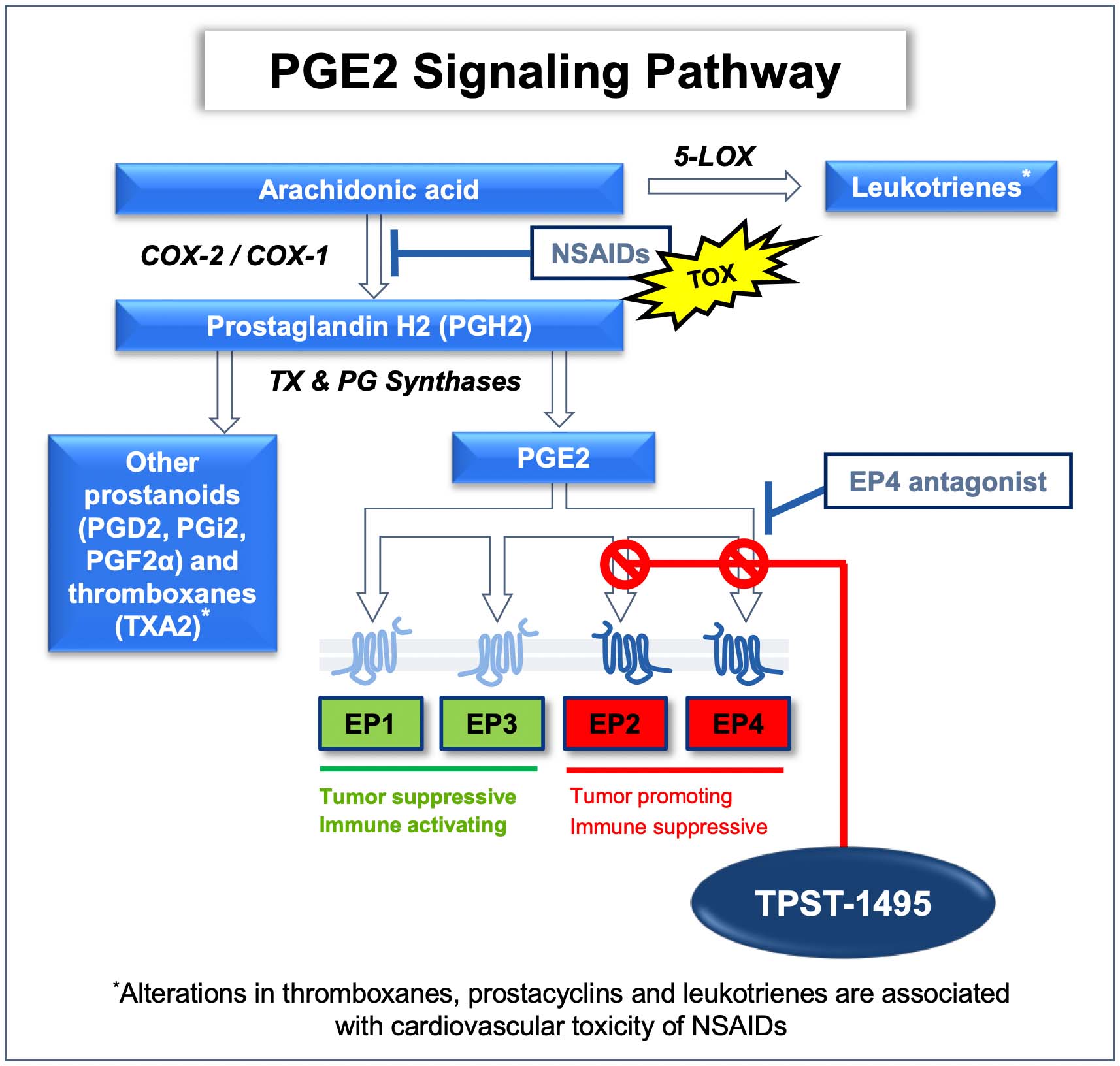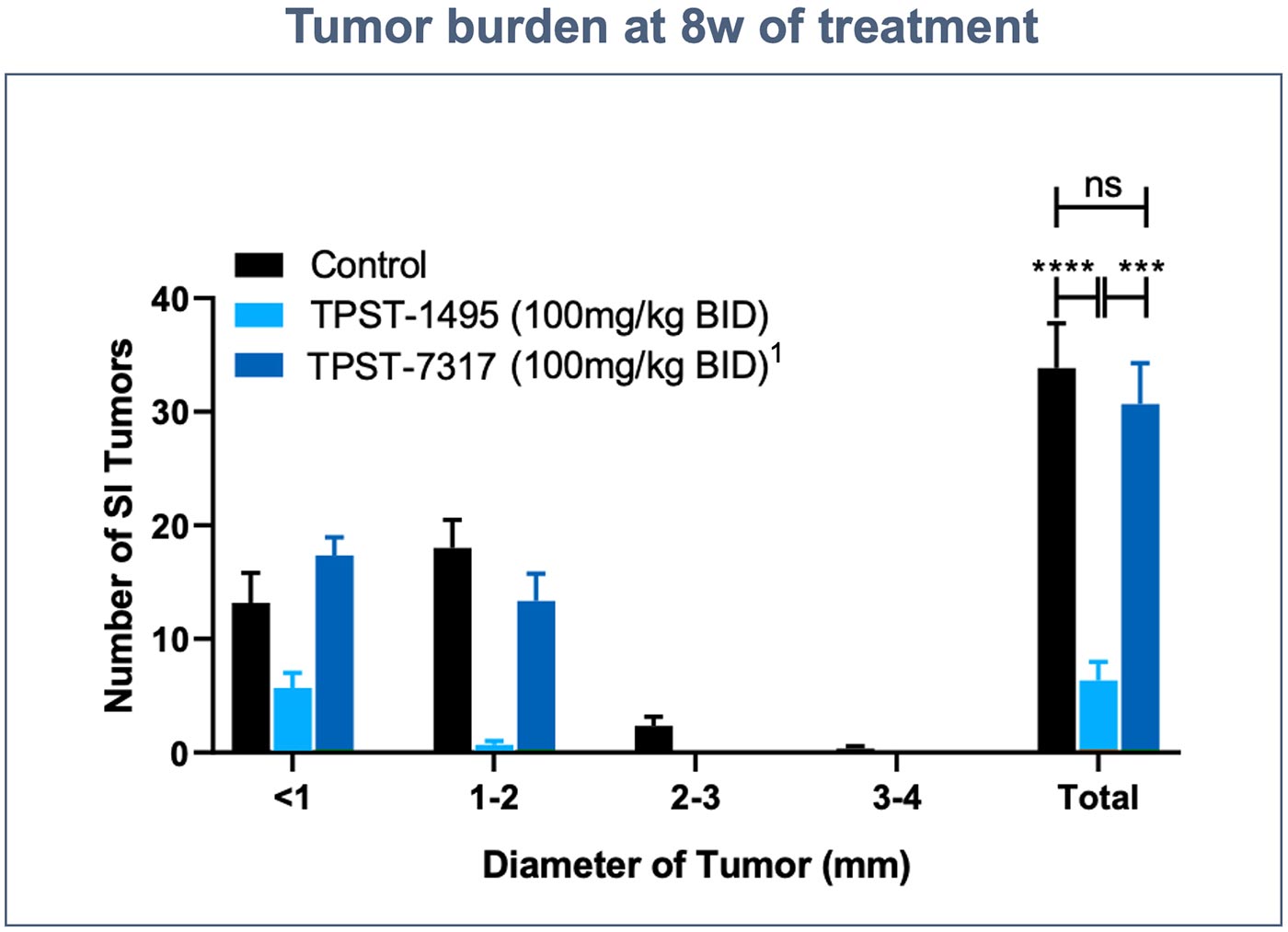Dual EP2/EP4 Antagonism
Prostaglandin E2 (PGE2) is produced by both the tumor and stroma and drives tumor growth while acting as a potent immunosuppressive factor in the TME. Prostaglandin signaling promotes the differentiation of and skewing towards immunosuppressive cell populations (e.g., myeloid-derived suppressor cells, regulatory T cells, and M2 macrophages) in concert with the decrease in the differentiation, maturation, activation and proliferation of inflammatory cell populations (e.g. dendritic cells, NK cells, and CD8 positive T-cells).
Four E-prostanoid receptors (EP1, EP2, EP3, and EP4 respectively) are the primary mediators of prostaglandin signaling in the TME. Data generated by Tempest in addition to extensive published literature indicate that selectively blocking signaling through EP2 and EP4 receptors, and not EP1 and EP3, is the most effective strategy to abrogate prostaglandin driven tumor growth and immunosuppression.

Tempest has developed TPST 1495, a novel, highly selective and potent EP2-EP4 dual antagonist. In preclinical studies, TPST-1495 is significantly more potent than EP4-only antagonists.

TPST-1495 effectively increases survival and modulates the TME in APCmin/+ mice. A, Tumor counts in the small intestine of APCmin/+ mice. Mice were treated starting at 13 weeks of age for 3 weeks with TPST-1495 (100 mg/kg twice a day, orally), E7046 (150 mg/kg every day, orally), PF04418948 (100 mg/kg every day, orally), or Celecoxib (60 mg/kg every day, orally). Results are representative of multiple experiments with 7–10 mice. B, Kaplan–Meier curve of survival of APCmin/+ mice and log-rank Mantel–Cox P values of listed comparisons. Mice were ages to 13 weeks, then treated with as in A or with the combination of E7046 and PF04418948 at monotherapy doses, for 6 weeks. Survival was monitored longitudinally and mice were sacrificed as they became moribund. Results are representative of two similar experiments with 8 mice per group.
https://www.ncbi.nlm.nih.gov/pmc/articles/PMC10408683/
TPST-1495 is a potential orally bioavailable first-in-class EP2/4 dual antagonist that has completed monotherapy dose escalation. The company plans to advance TPST-1495 into a Phase 2 study in patients with Familial Adenomatous Polyposis (FAP) in 2025 under the auspices of the Cancer Prevention Clinical Trials Network and funded by the National Cancer Institute (NCI) Division of Cancer Prevention, subject to final approval of NCI.

